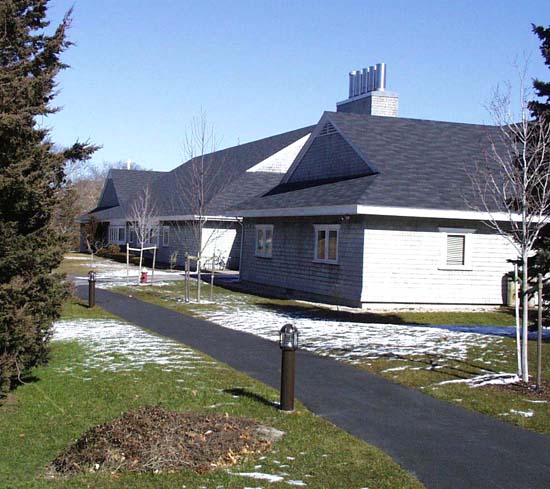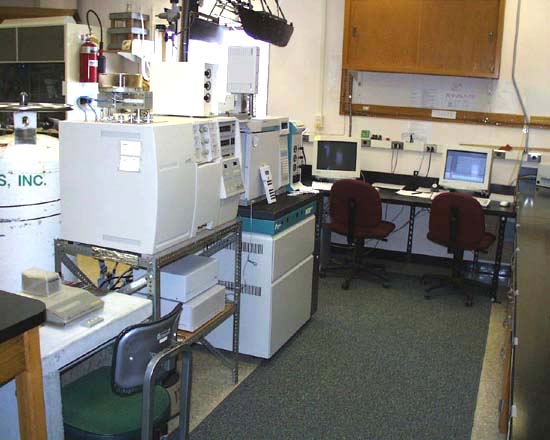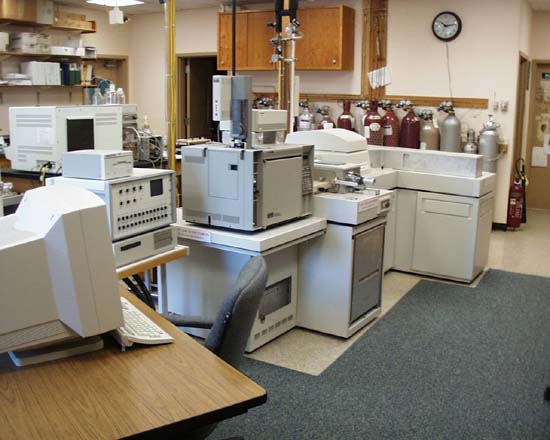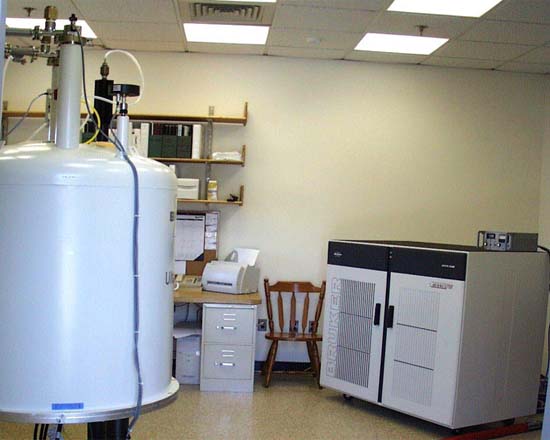Instrumentation
Facility Space
The OMS Facility has been operated by the Marine Chemistry and Geochemistry Department for more than 25 years. Housed since 1982 in an open 800 sq. ft. space in the Fye Laboratory, the Facility has a dedicated 36 KVA UPS, transient voltage surge suppression, centralized gas distribution systems, and closed loop cooling water available to all instruments. Current instrumentation is a Finnigan-MAT Deltaplus irmMS interfaced via a Combustion III unit to a HP 6890 GC (modified by Gerstel for 2D-GC), and via a Conflo II system to a Fisons 1108 Elemental Analyzer with a Costech Zero-Blank Autosampler.
Instruments previously operated as part of the facility included Finnigan 4500, 3200 and 1015 GC/MSs, the VG Autospec-Q high resolution MS and the Bruker Avance-400 and AC-300 NMR spectrometers.
The OMS Facility shares the space with WHOI's FT-MS Facility.
DeltaPlus Isotope Ratio Monitoring Mass Spectrometer (Finnigan-MAT)
The stable light isotope mass spectrometer was added in 1997 particularly to provide compound specific d13 C isotopic data. In compound specific mode, compounds are separated using an HP 6890 GC with Gerstel PTV/CIS4 injection system and modified for two-dimensional GC then oxidized to CO2 in the Finnigan GC combustion interface before being sent into the MS source. We have significantly modified the combustion interface to increase robustness and serviceability. If isotopic data is desired for bulk samples such as sediments or biological materials, the GC is replaced with the elemental analyzer. Using this mode, and with significant modifications to the EA, we have determined d15N in pigments at levels as low as 150nM.
Elemental Analyzer Model 1108 (Carlo Erba)
The elemental analyzer allows for the determination of the amount of carbon, hydrogen, nitrogen and sulfur in a bulk sample. Samples are weighed into tin boats, which are then dropped into an oxygen rich gas stream in the combustion tube. As the tin flash-combusts at 1700°C, the sample is also rapidly and fully combusted. The resulting gases are then separated on a packed GC column and quantified using a TCD. Alternatively, the composition and bulk isotopic ratios of carbon and nitrogen can be determined by passing the GC effluent to the DeltaPlus irmMS.
A Costech "Zero-Blank" atmosphere excluding autosampler was added in 2010.
Gone but not forgotten! Autospec-Q High Resolution Mass Spectrometer (VG)
The hybrid high resolution quadrupole mass spectrometer was purchased in 1992 when the demand for new ionization techniques, elemental composition, high mass, and MS/MS data exceeded the capabilities of our existing quadrupole mass spectrometers. Samples can be introduced into the Autospec-Q from the GC, in-source glass cup, in-source resistively heated platinum wire coil, or from static or dynamic liquid secondary ion mass spectrometry probes (“LSIMS”; similar to fast atom bombardment or “FAB”). Samples are ionized by electron ionization (at energies from 8 to 250eV), chemical ionization or the LSIMS technique. Our system has a mass range up to 4500 Da (“a.m.u.”) at full accelerating potential (8KV) and is quite capable of achieving 5000 resolution at scan speed and range appropriate for use with GC introduced samples. At slower scan speeds or narrower mass range, actual resolutions of more than 20,000 are quite possible. MS/MS is possible either by linked scan techniques, or using the quadrupole stage.
To make space for a new, ultra-high resolution Fourier transform ion cyclotron resonance mass spectrometer (FT-ICR MS), the Autospec-Q was retired in December 2006.
Nuclear Magnetic Resonanace Spectrometer (Bruker)
(This instrument is no longer operated as part of the OMS Facility, but Carl Johnson remains the primary operator.)
This nuclear magnetic resonance spectrometer was acquired by the Facility in 2000 and replaced our vintage 1989 Bruker AC-300. The actively shielded magnet and fully digital electronic brings us once again to the state-of-the-art in NMR. This system is outfitted with three sample probes. The 5mm inverse broadband probe with gradients, tunable from 109Ag to 31P, is our most commonly used probe for 1H, 13C and 15N. The gradient option is particularly useful with protium spectra from marine or biological samples containing large amounts of water. The 10mm broadband observe probe covers the same spectral range as the 5mm inverse probe, but is optimized to directly observe the non-protium nucleus and holds large volumes of material. The 7mm cross polarization-magic angle spinning (“CPMAS”) probe again covers the same spectral range, but allows for the acquisition of NMR spectra from solid samples.



